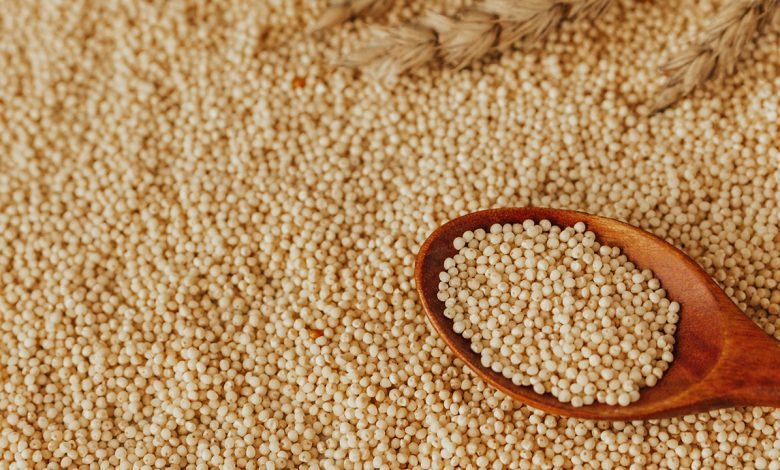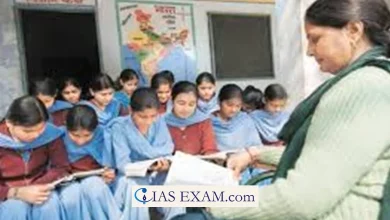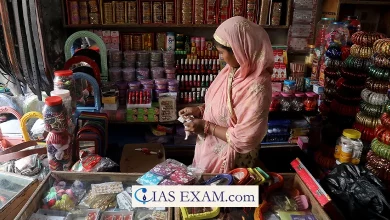Millets – the super food for personal and global health
GS 3- Food and crops

Context– Recently the Prime Minister inaugurated a global conference on millets and launched a book- “Shree Anna” by FSSAI. The year 2023 has been declared as the International year of millets by the United Nation’s Food and Agricultural Organization. The benefits of this “high- fiber food” to consumers and farmers were discussed at the conference. The P.M called them as “door to prosperity” for India’s farmers, the “cornerstone of nutrition”, and as a strong supporter against “climate change”. The Indian Institute of Millets Research, Hyderabad was also decided to be declared as a centre of excellence.
What are millets?
Millets are a category of small seeded grasses with coarse grains rich in proteins, fibers and carbohydrates. The Indian household is pretty familiar with common millets like Ragi (finger millet), Bajra (pearl millet) and Jowar (sorghum). Millets with their numerous dietary benefits also promote in sustainable farming as they can be grown without chemical fertilizers and in adverse climatic conditions. In India, it is kharif crop. The millets were the first crops to be domesticated and there exists evidences of its consumption during the Indus valley civilization.
Why they are called the ‘super food’?
- They serve as excellent source of fiber, proteins, antioxidants, macro and micro minerals and vitamins.
- They are gluten free and hence serve as an excellent alternative source of carbohydrates for people with gluten intolerance and celiac disease.
- Low glycemic index value makes it an excellent food for diabetic patients and helps keep cardiovascular diseases at bay.
- Helps in weight managemente tackle obesity and keeps the gut healthy.
Agro economic benefits of millets
- Millets are highly climate resilient, can be grown in adverse climatic conditions.
- They can be grown in drought prone areas require less water for cultivation and can even thrive in poor soil, hence farmer friendly.
- They promote in sustainable and environment friendly farming as they can be cultivated without the use of any chemicals and fertilizers using traditional farming techniques.
Global distribution of millets:
Millets are mostly grown in tropical and subtropical regions of the world mostly in the Asian and African countries. It is grown in almost 93 countries.
India accounts for the largest producer of millets (19% of world production in 2020 as per APEDA) followed by Nigeria and China.
In India- The major millet producing states are Rajasthan, Karnataka, Maharashtra, Uttar Pradesh, Haryana, Gujarat, Madhya Pradesh, Tamil Nadu, Andhra Pradesh, Uttarakhand .
Problems with millet cultivation in India
- The super food has been under the shadow since the green revolution that only fostered high production of rice and wheat.
- According to the food and agricultural organization (FAO) the global troika of rice–maize-wheat constitutes 89% of global cereal production.
- The areas under millet cultivation are still low and the cultivation and processing is still time consuming and laborious task owing to their low productivity.
- There still prevails a lack of awareness on the benefits of millets among both the producers and consumers.
- There is lack of support from the government on its production, processing, distribution and marketing.
- The consumers are less inclined to explore due to perceived taste preferences and high market prices over millet products.
Initiatives to promote Millets
- The NMM- National Millet Mission (2007) to promote cultivation and consumption of millets.
- Initiative for nutritional security through intensive millet production
- Odisha’s Millet Mission
- Promotion of millet based food among hockey players in Hockey world cup 2023 held in Odisha.
- Hiked MSP (minimum support price) for millets.
- Inclusion of millets in PDS (Public distribution system) and in midday meal scheme of schools.
Way forward
Millets production and consumption has multiple benefits at the micro and macro level. The Indian agro-economy can get a boost with its promotion. There needs to be creation of awareness through education on to changing the perception of both farmers and consumers regarding affordability of millets. The government should play a pivotal role in India’s aim for a millet revolution. Finally there needs to be a joint and collaborative effort in the procurement, processing and marketing of the millets among the various stake holders to make reach this rich food from the farmers ground to the consumer’s plate.









.png)



